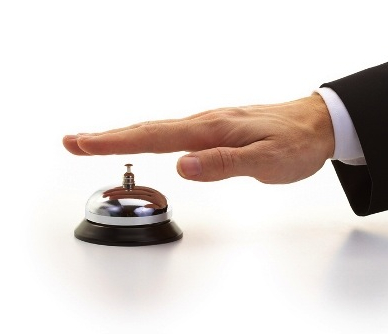During my zookeeping and environmental education career, I have interacted and worked with a variety of animals, including brown bears, wolverines, red foxes, moose, camels, mountain goats, dolphins, sea lions, raccoons, porcupines, snakes, raptors and ravens. I am also a young adult author, and my debut novel ESSENCE was released in June 2014 by Strange Chemistry Books. Ask me anything!
Thanks so much, Marques! Public appearances were actually a big part of my job in Alaska. I trained the pint-sized outreach animals--red foxes, great horned owls, porcupines, red-tailed hawks, baby deer, etc.--and I took them to schools and visitor centers and special events. I would love to get back into those types of outreaches some day. If you know anyone who would like to hire me as a TV personality, you just let me know! ;)
Great question! It absolutely depends on the individual animal, and the answers can vary significantly. A domestic animal like a goat or sheep may simply be corralled back where it belongs, and a net may be adequate for a small animal like a raccoon or a crow, but a tiger will obviously require much more significant force.
In all cases, zoos start early by categorizing each animal by "threat level" and designing emergency plans to deal with a possible escape. Zookeepers memorize these plans, and animals are also trained to view their crates as "safe places." (This works wonders when a nervous animal suddenly finds itself out of the safety and comfort of its enclosure.)
When an animal escapes, zookeepers generally start by corralling it and attempting to entice it back into its enclosure using positive reinforcement and the procurement of its crate. If this doesn't work, nets or lassos may be used. If these don't work, tranquilizer guns are often used.
Last but not least, zoos may use deadly force, but this is obviously the VERY last option, and it is only employed if the animal becomes an imminent threat to someone's life.
Hi GD! Since polar bears are so intelligent and large, their space requirements are kind of mind-boggling. The Association of Zoos and Aquariums sets the standards for polar bear enclosures in accredited facilities, and they have an entire handbook on polar bears. (Here's the link: http://goo.gl/gLFh9S)
In terms of physical space, "the Manitoba Standards state that 1-2 bears must be given access to 5400ft2 of dry land, with an additional 1650ft2 of land for each additional polar bear. The Polar Bear Protection Act requires a pool with area of 760ft2, and with a deep end that is 9' or more deep be incorporated within the polar bear habitat."
In addition, "the landscape should be naturalistic (e.g., planted with grass, bushes, and trees for shade) and functional, including as key elements: a pool, foliage, habitat furniture (e.g., boulders, trees, logs, etc.), open/panoramic views, and substrate pits with various materials... Climbing structures and platforms can be used to provide polar bears with accessible vantage points that enable them to observe distant vistas beyond their habitat, and this can serve to increase the sensory complexity of the habitat itself."
It really depends on the situation. The animal's best interests always must come first, so staff veterinarians closely monitor aging and / or ailing animals. If it is possible to allow the animal to live out its life, that is obviously the ideal choice. Sometimes though, euthanasia becomes the only humane choice--much like with aging or ailing cats and dogs. Saying goodbye to an animal is heartbreaking, and I can't tell you how many tears I have cried through the years. But an animal's welfare comes before anything else, so sometimes a hard decision must be made.
Hotel Front Desk Agent
 What's the MOST trashed you've ever found a hotel room?
What's the MOST trashed you've ever found a hotel room?
"The Onion" Contributors
 What's your favorite Onion headline of all time?
What's your favorite Onion headline of all time?
Swim Instructor
I love this question! The biggest animal I have worked with is a 1,600 pound, seven-foot tall male Bactrian camel named Knobby. The smallest is probably a 110 gram, nine-inch tall male boreal owl named Mouse. Pound for pound, the camel definitely wins. However, I have worked with many high-maintenance little guys, including a snowy owl named Freya, a raccoon named Max and a muskrat named Critter. Although they were all fairly small, they still required a LOT of my mental energy!
Oh my gosh, how funny, because I was just looking at this video earlier today! It's really well done, isn't it? I was thinking this video was a hoax for a few reasons, and some subsequent research confirmed this for me. It was apparently made by some 3-D animation students at a school in Montreal, and they have come forward to say they animated both the eagle and the kid into the shot. (AMAZING work, though, right? Well done, guys!) However, let's assume for a minute that we don't already know this video is fake... The eagle was supposed to be a golden eagle (it's not, BTW), and golden eagles are known for being huge. They can have wingspans of 6 to 7.5 feet, and they usually weigh between 8 and 11.5 pounds. However, when you figure that a newborn human baby usually weighs that much, that means the toddler in the video probably weighs... What? 25-30 pounds? It's not IMPOSSIBLE to assume that a golden eagle might swoop down to check out a child anyway, but I would say it's VERY unlikely. Golden eagles typically prey on small rodents and rabbits, and their usual weight limit is half their body weight--so 4-6 pounds on average. Therefore, this eagle would know from a distance that this toddler is far too heavy to carry for more than an instant. (It would also be probably very put off by all the elaborate clothing and such.) Finally, golden eagles generally stay away from humans, so I can't imagine one swooping down with so many people standing around this park. But, holy cow, I have to admit that my heart stopped for a minute when I first saw this!
Hahaha, absolutely! Many, many species of animals enjoy a gratuitous romp in the hay. As a matter of fact, bonobos (chimp-like primates) revolve almost their entire social structure around sex. They use intercourse (in various, creative forms) to greet each other, to solve disputes, and to make up after fights. They even use sex as currency when bartering for food! In my personal experience, I have worked at facilities that house dolphins, and... man! The things I have seen, particularly with males (and females, and other males, and cones, and toys, and pretty much any other inanimate thing)... Let's just say the Spice Network could take some tips from those guys... ;)
-OR-
 Login with Facebook
Login with Facebook (max 20 characters - letters, numbers, and underscores only. Note that your username is private, and you have the option to choose an alias when asking questions or hosting a Q&A.)
(A valid e-mail address is required. Your e-mail will not be shared with anyone.)
(min 5 characters)
By checking this box, you acknowledge that you have read and agree to Jobstr.com’s Terms and Privacy Policy.
-OR-
 Register with Facebook
Register with Facebook(Don't worry: you'll be able to choose an alias when asking questions or hosting a Q&A.)